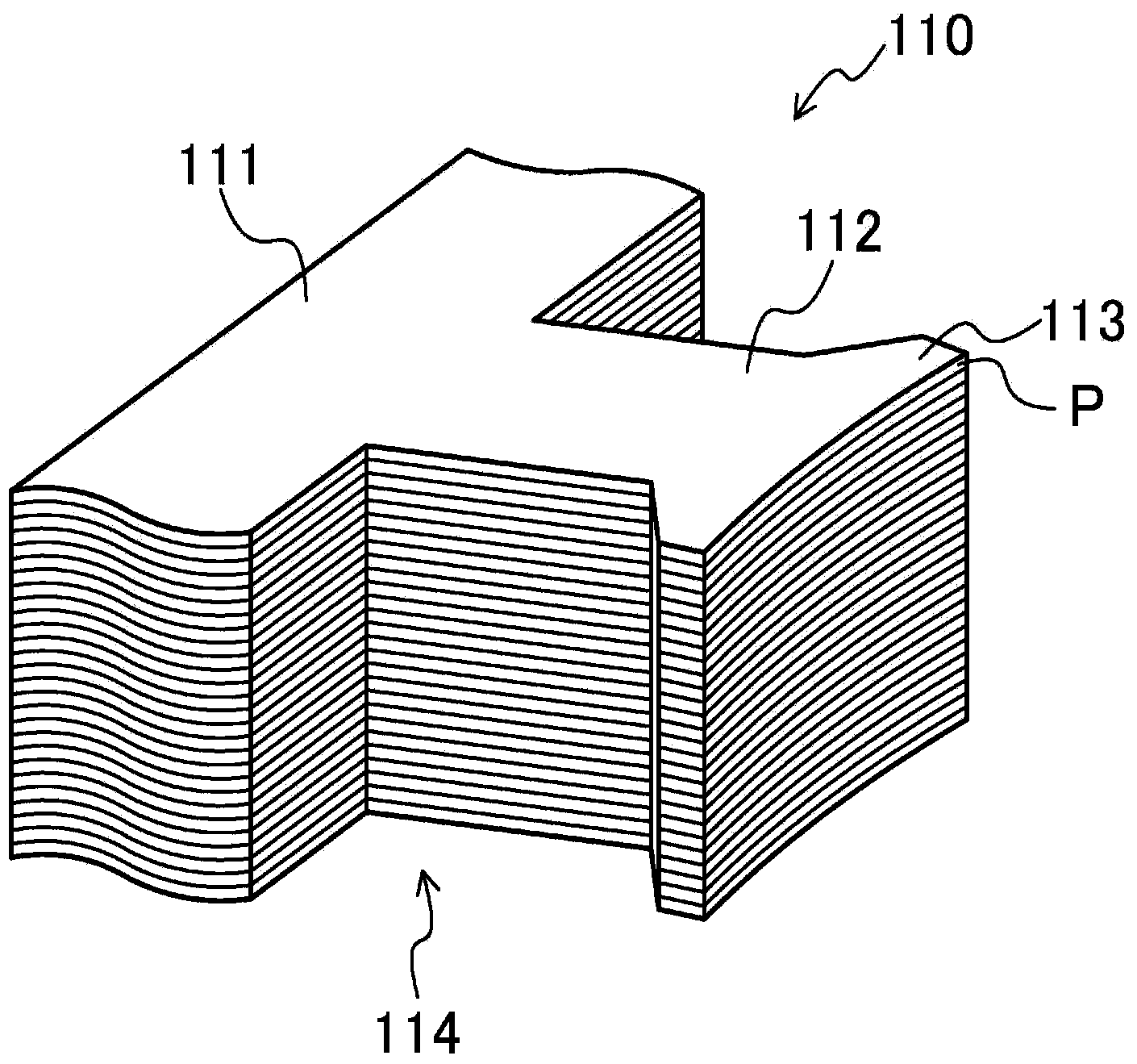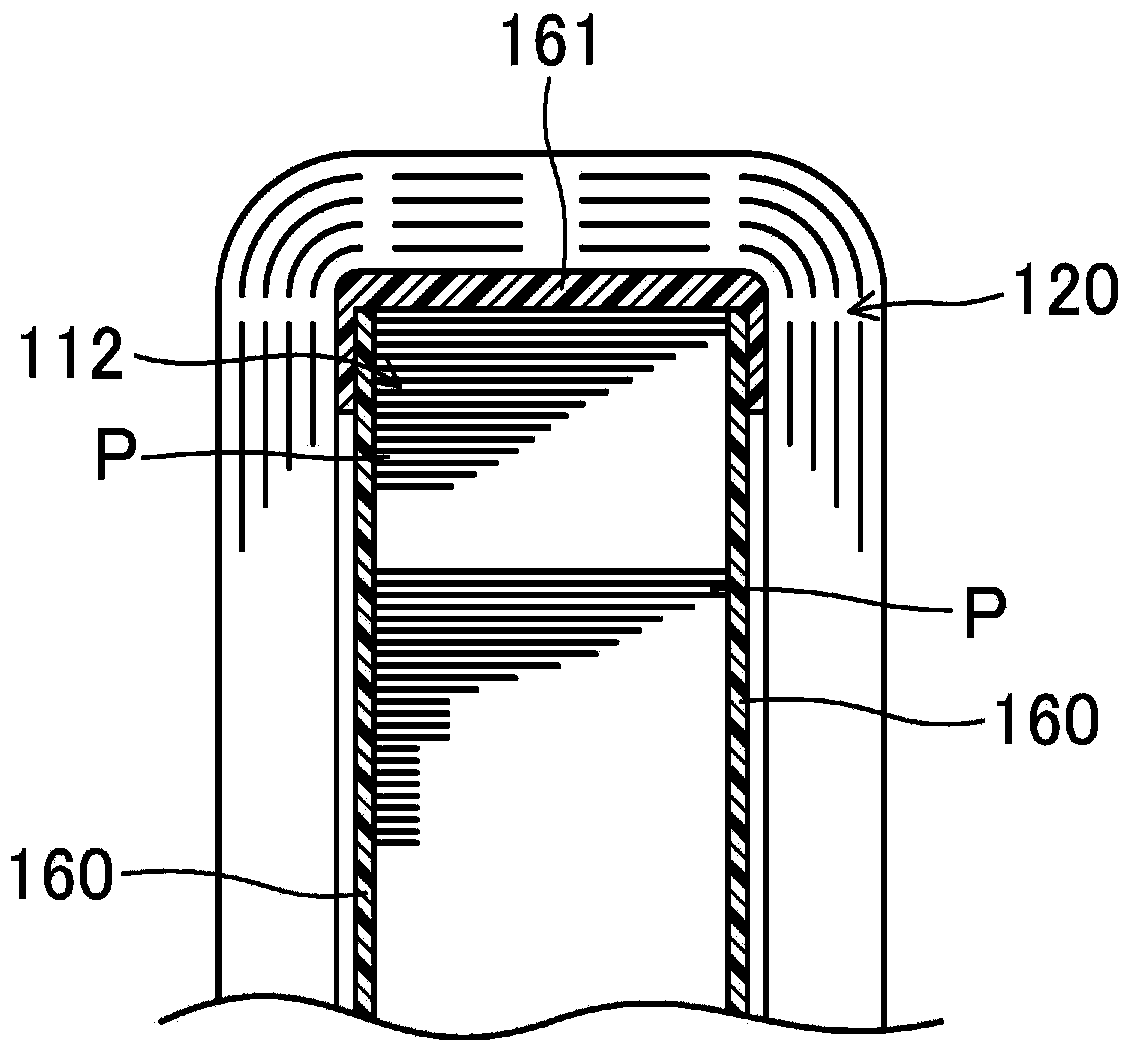Rotor and rotating electrical mechanism using same
一种电气机械、转子的技术,应用在转子领域,能够解决成本增加等问题,达到组装容易、稳定运转、解决消磁问题的效果
- Summary
- Abstract
- Description
- Claims
- Application Information
AI Technical Summary
Problems solved by technology
Method used
Image
Examples
no. 1 approach 》
[0053] figure 1 It is a transverse cross-sectional view of the motor 10 according to the first embodiment of the present invention. This motor 10 is used, for example, in an electric compressor of an air conditioner (illustration omitted).
[0054]
[0055] motor 10 as figure 1As shown, a stator 100 , a rotor 200 , and a drive shaft 300 are provided, which are housed in the casing 20 of the above-mentioned electric compressor. In addition, in the following description, the axial direction refers to the direction of the axis of the drive shaft 300 , and the radial direction refers to a direction perpendicular to the axis. In addition, the outer peripheral side refers to the side relatively far from the above-mentioned axis, and the inner peripheral side refers to the side relatively close to the above-mentioned axis.
[0056]
[0057] like figure 1 As shown, the stator 100 includes a cylindrical stator core 110 and a coil 120 .
[0058] The stator core 110 is a laminat...
no. 2 approach 》
[0087] Figure 10 It is a sectional view of the rotor 200 according to the second embodiment of the present invention. The rotor 200 of the present embodiment includes one first rotor core 240 and one second rotor core 250 . Also in this example, the height H1 (the aforementioned axial dimension) of the first rotor core 240 is smaller than the height H2 of the second rotor core 250 . The first rotor core 240 and the second rotor core 250 are connected to each other at axial ends.
[0088] With such a configuration, even in the present embodiment, even if a reverse magnetic field acts on the rotor 200 , most of the magnetic flux flows toward the magnetic core portion 240 a on the first rotor core 240 side. Therefore, in the present embodiment, the problem of demagnetization can be solved on the first rotor core 240 side of each permanent magnet 220 . In addition, the second rotor core 250 can easily insert the permanent magnet 220 into the magnet groove 211 from the axial en...
no. 3 approach 》
[0090] Figure 11 It is a sectional view of the rotor 200 according to the third embodiment of the present invention. The rotor 200 of this embodiment includes one first rotor core 240 and two second rotor cores 250 . The rotor 200 of the present embodiment is formed by sandwiching the second rotor core 250 from both axial ends of the first rotor core 240 . Also in this example, the height H1 (the aforementioned axial dimension) of the first rotor core 240 is smaller than the height H2 of the second rotor core 250 .
[0091] With such a configuration, even in the present embodiment, even if a reverse magnetic field acts on the rotor 200 , most of the magnetic flux flows toward the magnetic core portion 240 a on the first rotor core 240 side. Therefore, the problem of demagnetization of the permanent magnet 220 can be solved in the vicinity of the axial center portion of the rotor 200 where a relatively strong reverse magnetic field tends to act.
[0092] In addition, in thi...
PUM
 Login to View More
Login to View More Abstract
Description
Claims
Application Information
 Login to View More
Login to View More - R&D
- Intellectual Property
- Life Sciences
- Materials
- Tech Scout
- Unparalleled Data Quality
- Higher Quality Content
- 60% Fewer Hallucinations
Browse by: Latest US Patents, China's latest patents, Technical Efficacy Thesaurus, Application Domain, Technology Topic, Popular Technical Reports.
© 2025 PatSnap. All rights reserved.Legal|Privacy policy|Modern Slavery Act Transparency Statement|Sitemap|About US| Contact US: help@patsnap.com



